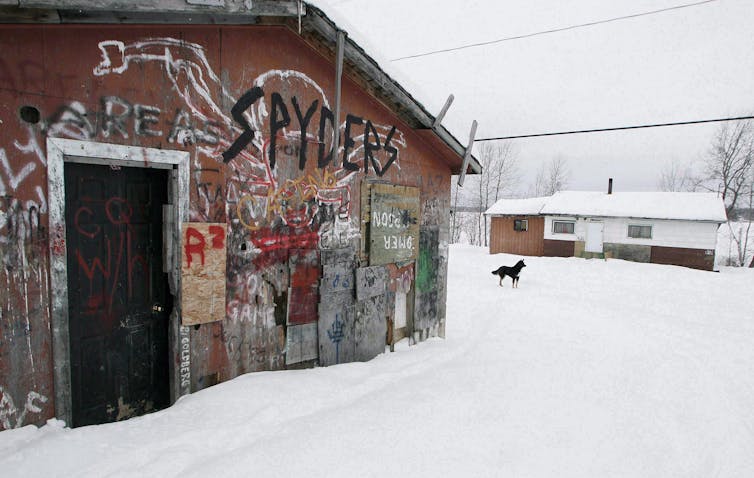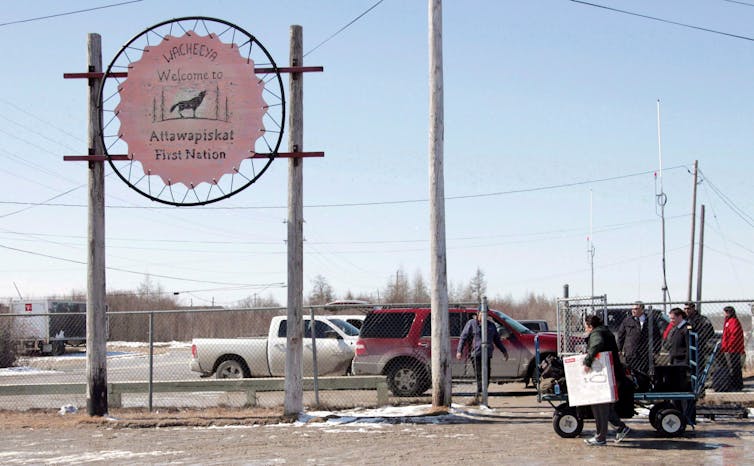
Ann M Seymour, Carleton University
In Canada, everyone is supposed to have the necessities of life such as housing, water, access to programs and services. But in reality, not all groups are treated equally.
On March 18, the federal government announced a $305 million package to help Indigenous communities prepare for and respond to the virus. On April 20, B.C. announced a plan for rural, remote and Indigenous communities that includes improved medical transportation options to larger centres and a virtual doctor program. But much more is needed across the country.
Although, these moves sound promising, there is an obvious gap regarding any “investment” and “commitments” especially for First Nations and remote Indigenous communities. Many Indigenous remote communities are without clean running water, safe affordable housing, education, health and a robust economy that support a quality of life. In some remote Indigenous communities, there is a lack of infrastructure, mobility and accessibility to medical care. Some communities are fly-in only.
Vulnerable populations are more at risk of getting infections in general and right now, COVID-19. This month, at least nine First Nations have confirmed cases of COVID-19.
The challenges are substantial. As a mental health first aid First Nations co-facilitator, I have witnessed first-hand many tragedies within remote First Nations communities like Eabametoong (Fort Hope), Eagle Lake and Lac Seul. Homes can be unsafe, overcrowding is a huge concern, there is no clean running water, young girls are vulnerable to trafficking and there is a lack of timely access to health-care.
Why are Indigenous communities vulnerable?
Canada’s Minster of Indigenous Services, Marc Miller said social determinants of health, such as unsafe drinking water, crowded housing, lack of health professionals, poor infrastructure and chronic diseases, play a role in making Indigenous communities more vulnerable to the coronavirus.
While many First Nation communities are located close to urban centres with access to medical, recreation and shopping centres, many others are in remote areas. And not all remote Indigenous communities confront crises in a similar way. Some remote communities are more self-sufficient than others, such as Fort Severn, Moose Cree and Chapleau Cree First Nations. Some rely on a traditional way of life: living off the land, hunting and gathering, accessing the land for medicinal purposes and incorporating ceremonies.

But often, living in an isolated community means a lack of recreational, educational and employment opportunities. Isolation has an impact on an individual’s holistic mental health and wellness. The lack of social outlets combined with the impact of geographic isolation compounds the dangers of other factors such as psychological, emotional abuse and jealousy.
Upon the arrival of European settlers, Indigenous people were devastated by the waves of epidemics of smallpox, tuberculosis, scarlet fever, influenza and measles. Back than, many of our people didn’t know what to do, we were helpless to the deadly diseases. Today, Indigenous people are more proactive, we have a voice and are prepared to advocate for the needs of Indigenous Peoples.
Extreme injustice
Working in extreme injustice can be traumatizing for helpers. As I study the moral principles of social justice in social work — which places human dignity and human rights as its highest priorities — and scan Canada as a nation, I don’t see equality and inclusion. Rather, I struggle with the discontentment of injustices, racism, ongoing discrimination and exclusion.
There is a constant and deep, inner fight within my heart and soul as I try to make sense of the world, and our place in it as Indigenous Peoples. I struggle with finding a common ground, one in which Indigenous Peoples can move forward, be respected and get access to equal health care, education, nutrition and housing.

U.S. News and World Report ranks Canada’s public health-care system as the most well-developed in the world. And yet, Indigenous communities are still not getting what they need. Community chiefs and leaders are seeking seats at the table. Arlen Dumas, Grand Chief of the Assembly of Manitoba Chiefs clearly states, “the days of designing systems that are imposed on First Nations without consultation and consent must end.” Indigenous leaders are fighting for equal access for all Indigenous Peoples.
Is this what we call equality? Without appropriate and accessible medical supplies, health care professionals and mental health support, we cannot call this equality; we cannot claim Canada is providing equal treatment for everyone.
Immediate support needed
Immediate support services are needed to help offset stressors as a result of COVID-19 in remote communities. The theory of justice in social work calls for the equal distribution of resources among members of the community.

The needs and demands of the remote communities may vary; still, essential supplies should be provided to ease further trauma and anxiety. There are many things we take for granted in urban centres — hand sanitizer, soap, masks, gloves and access to affordable food to create a basic nutritious diet — that are either not readily available or are very expensive in remote communities.
I believe another way to provide immediate assistance is to halt price gouging. For example by pricing grapes at $3.00 instead of $11.79 or Tide Pods at $10.99 instead of $35.29 and this would provide some much-needed relief to the community.
Remote communities must have appropriate, professional supports in place. To continue to try to remedy a situation by trying to “integrate” isolated communities, send bottled water to address the water crisis or address ongoing trauma by sending mental health care workers is not ethically responsible. Remote communities need to have a strategy in place to address concerns relating to COVID-19.
Now is the time to invest and commit to those plans. Every act of kindness can go a long way to help during these times of crisis.![]()
Ann M Seymour, Ph.D. student, Social Work and Indigenous Peoples, Carleton University
This article is republished from The Conversation under a Creative Commons license. Read the original article.

